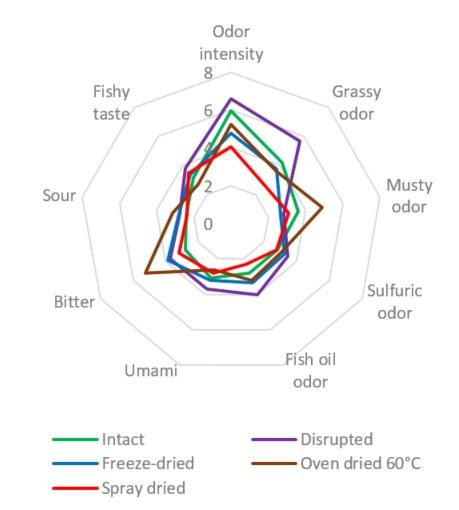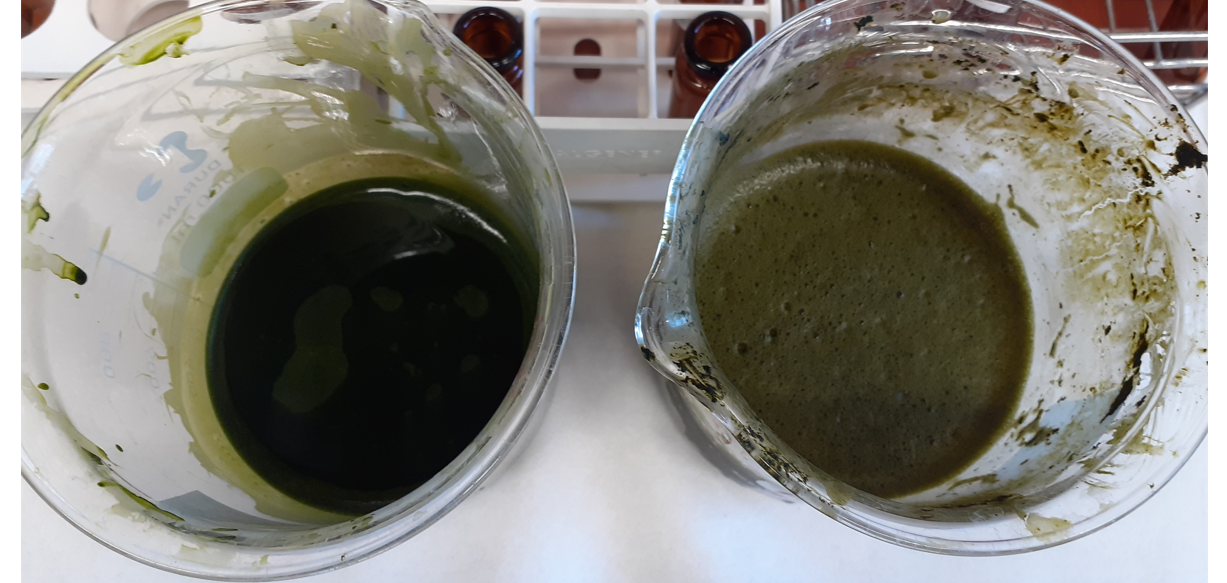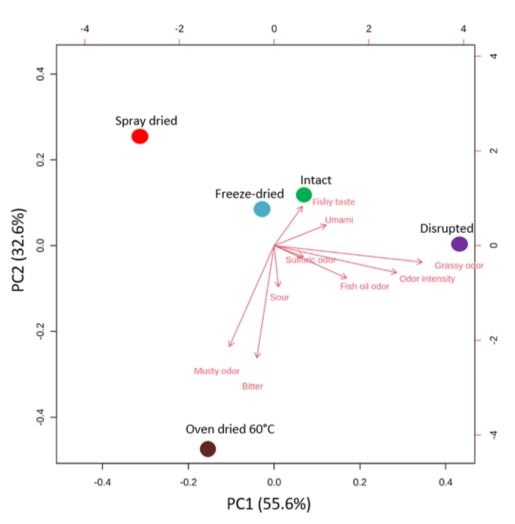General The effect of drying, cell disruption and storage on the sensory properties of Nannochloropsis sp.

In this study, we investigated the effect of storage and processing on the flavor of freshly harvested Nannochloropsis sp. biomass obtained from an industrial producer. Fresh Nannochloropsis is characterized by an apparent sweet grassy odor with fishy odor notes and a weak umami taste. Importantly, the storage period of freshly harvested Nannochloropsis paste should be limited as the volatile profile showed a strong increase in the saturated alcohols, esters and sulfur-containing volatiles. This would result in overripe fruity, winey and fermented-like odors which will negatively impact the palatability of the Nannochloropsis.

Both thermal drying methods; spray drying and oven drying affected the sensory properties of the Nannochloropsis biomass, in contrast to freeze-drying which maintained the flavor of the Nannochloropsis biomass. Thin-layer oven drying at 60°C resulted in a high bitterness and a strong musty odor which can be attributed to high concentrations of from Strecker aldehydes (e.g. 2-methylpropanal, 3-methylbutanal and 2-methylbutanal, benzeneacetaldehyde and methional) and furans. Spray drying reduced the odor intensity and grassy odor of the Nannochloropsis biomass due to the loss of several volatile compounds (e.g. esters, saturated alcohols, dimethyl sulfide) which might be favorable for some food applications. These results showed that slow thermal drying techniques such as oven drying should be avoided to reduce the off-flavors in the final food product.

Cell disruption of fresh Nannochloropsis paste provided intense grassy and fish oily-like odors which is attributed to high amounts of fatty acid-derived unsaturated aldehydes, ketones and alcohols (e.g. 2-nonenal (E), 2,6-nonadienal (E,E), 2,4-decadienal (E,E), 1-hexen-3-one, 1-octen-3-one, 1-octen-3-ol and 1-hexen-3-ol) and dimethyl sulfide. The higher fishy-like aroma of freshly disrupted Nannochloropsis biomass could be interesting to improve the seafood flavor of plant-based seafood alternatives. However, attention should be given when the disrupted Nannochloropsis is stored as this strongly influenced its flavor properties. A rapid increase in fatty acid-derived volatiles, sulfur-containing volatiles and free amino acids was observed during storage which would evolve to strong grassy, fatty, rancid, and fish oil-like odors along with a stronger taste intensity.


Next to processing and storage of microalgae, cultivation conditions and strain selection could have an effect on the microalgae flavor. In this study, these effects were minimalized by using a large culture of the same batch (60 L), however, these effects should be further investigated to optimize the flavor of microalgae.
This study provides necessary information for the food industry on how to process freshly harvested microalgae paste which can be used to develop tasteful food products. This will improve the consumer acceptance of the final product containing microalgae and thereby supporting the current movement of microalgae as natural and healthy food ingredients.
